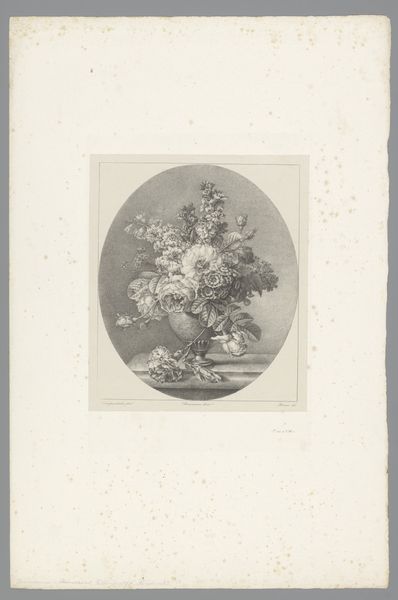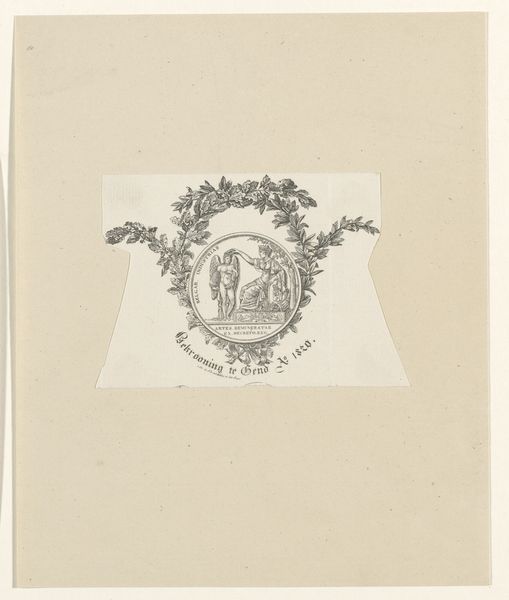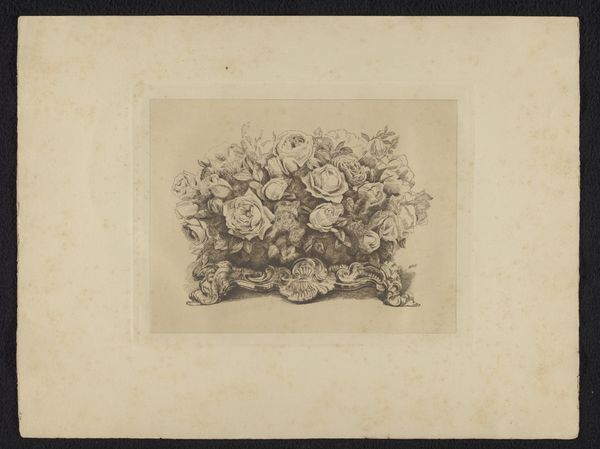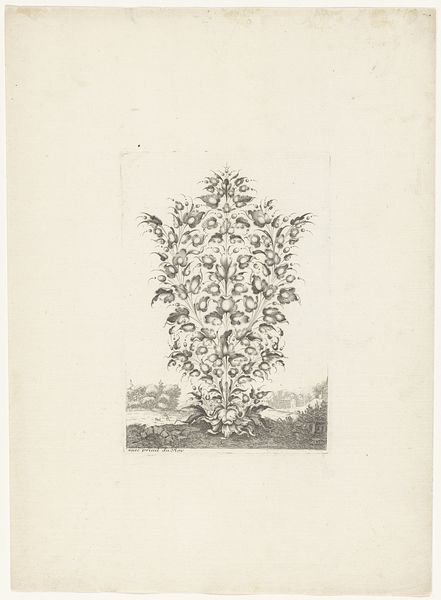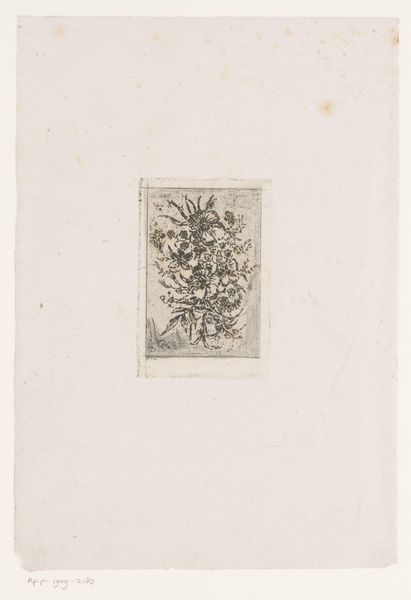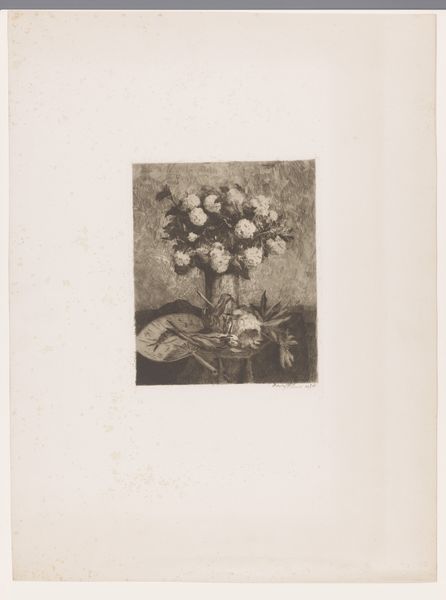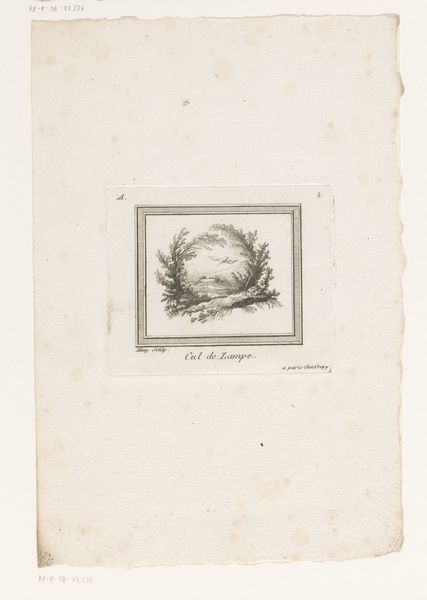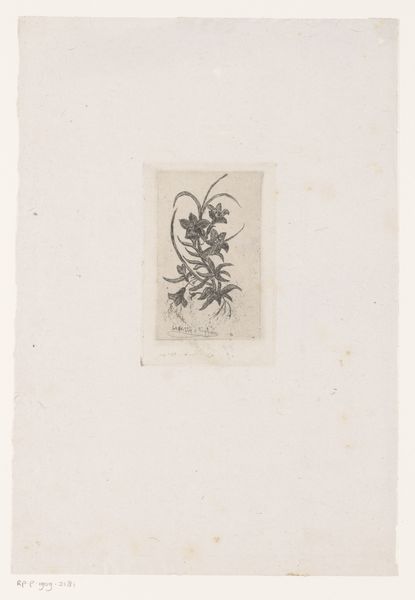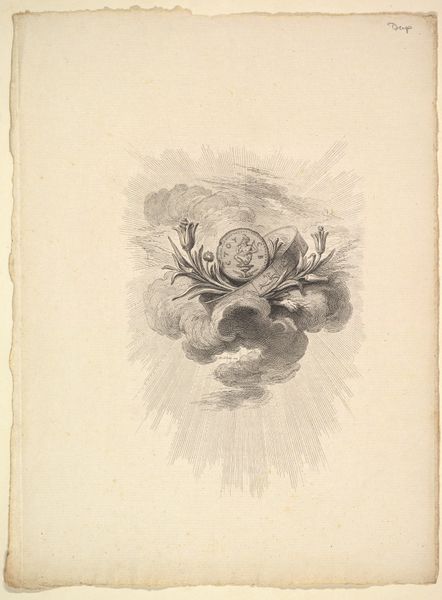
Dimensions: height 219 mm, width 186 mm
Copyright: Rijks Museum: Open Domain
Curator: Looking at Jules Ferdinand Jacquemart’s “Tuinvaas met bloemen” from 1862, it’s clear this piece, an etching printed with ink on paper, embodies academic art. The detailed lines capture a sense of refined skill. Editor: My first impression is that the composition feels delicate yet structured. There's a captivating interplay of light and shadow, lending the floral arrangement a dreamlike quality. It almost feels like a photographic negative. Curator: Exactly. The etching technique allowed for meticulous detail. Consider the paper it’s printed on—likely mass-produced and readily available, influencing its accessibility. And the ink itself would be a standard substance available in most printmaking locations. Editor: And how the ink sits on that paper shapes the whole experience! I find it intriguing that the artist uses monochrome to convey such a lush scene. Look at how he uses varying densities of lines to suggest the textures and fullness of each petal and leaf. Curator: Right, let’s think about the artistic and industrial landscape back then. Jacquemart and his contemporaries were catering to a growing middle class that wanted to engage with fine art at more accessible rates. The medium enabled this reproduction. Editor: Perhaps, but focusing solely on production somewhat overlooks the intentional artistic decisions present. The overall effect strikes me as decidedly Romantic, a moment of intense emotion captured. Observe how the carefully positioned flowers cascade down, seemingly threatening to overwhelm the classically ornamented vase. Curator: And yet the etching itself provides restraint, keeping the chaos at bay, providing a means of reproduction available across a wide range. This intersection of industry and creativity creates a cultural artifact ripe for consumption by the aspiring middle classes. Editor: Ultimately, viewing it only through a material lens threatens to overlook how those conscious artistic choices evoke particular sensations and feelings within a carefully balanced composition. But both production method and artistry enhance our understanding. Curator: Indeed. Perhaps we find, upon closer examination, that what makes it striking today stems precisely from that collision of craft and commerce, and from the piece itself. Editor: Agreed. A potent example of how both intention and its means can shape a lasting image.
Comments
No comments
Be the first to comment and join the conversation on the ultimate creative platform.

